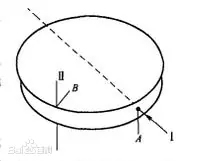The importance of fine annealing for optical materials is mainly reflected in the following aspects:
Elimination of Internal Stress:

During the processing of optical materials, internal stress may be generated due to rapid cooling or other external factors. These stresses not only affect the optical performance of the material but can also lead to cracking during use. Precision annealing can effectively eliminate these internal stresses through a process of slow heating and cooling, making the material more stable.
Improvement of Optical Performance Stability: Precision annealing can optimize the microstructure of the material, reducing light scattering and absorption, thereby improving the material’s transmittance and refractive index. This is crucial for devices that require high-precision optical performance.
Prevention of Material Cracking: Optical materials that have not undergone precision annealing are more prone to cracking when subjected to external forces or temperature changes. After precision annealing, the impact resistance and thermal resistance of the material are significantly enhanced, reducing the risk of cracking.
Improvement of Optical Uniformity: For certain optical materials, such as KDP crystals, appropriate annealing conditions can increase the transmittance of the crystal, improve optical uniformity, and reduce scattering particles. For example, 160°C is the optimal annealing temperature for KDP crystals. Annealing at 160°C for 48 hours can increase the crystal’s laser damage threshold by 28%, and annealing for 240 hours can increase it by more than 40%.
Enhancement of Product Quality and Reliability: Precision annealing can significantly improve the quality and reliability of optical materials, ensuring their stability and durability in various applications. This is especially important for optical devices that need to operate stably over long periods.